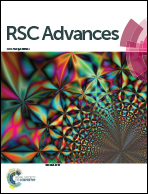Charged surface groups of nanoparticles and the adsorbed proteins codetermine the fate of nanoparticles upon interacting with cells
Abstract
Nanoparticles (NPs) are widely applied as targeted delivery vehicles for drugs. During transport in the body, proteins in serum are rapidly adsorbed onto the NP surface, creating a protein corona which impacts on the fate of NPs extensively. The objective of this study is to find how the charged groups on the NP surfaces affect the interactions among NPs, protein corona and cells, determining the cellular uptake of NPs consequently. We synthesized two types of polystyrene NPs, carrying carboxyl and amine groups on the surface, respectively, with similar size by emulsion polymerization. We quantified the protein (BSA) adsorption on the two types of NPs, characterized the configuration of the adsorbed proteins, and identified the change in physiochemical properties of NPs coated by protein corona. Despite the different charged groups of the NPs, we detected similar protein adsorption amounts and similar secondary structures of BSA adsorbed on the NPs, and we also found the surface properties (zeta potential and hydrophilicity) and particle size of the NPs became undifferentiated after adsorbing proteins. But we uncovered a significant difference in protein adsorption thermodynamics between the two types of NPs. HepG2 cell uptake studies were conducted. We are the first to make clear that the protein corona and the nature of NP charged surface groups both affected the uptake of NPs, but in different ways. Protein corona transformed the dynamic profile of uptake, turned the endocytosis pathway and may further impact on intracellular transport of NPs; while the charged groups of NPs significantly altered the uptake percentage via the possible mechanism that charged groups influenced configuration of the protein corona.


 Please wait while we load your content...
Please wait while we load your content...